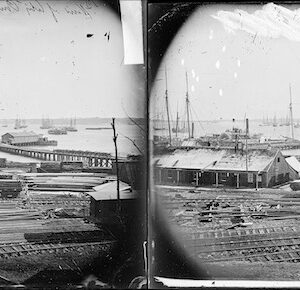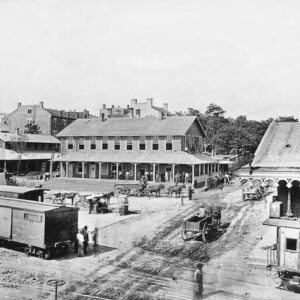Tag: passenger car
 Wikipedia says: A passenger railroad car or passenger car (United States), also called a passenger carriage, passenger coach (United Kingdom and International Union of Railways), or passenger bogie (India) is a railroad car that is designed to carry passengers. The term passenger car can also be associated with a sleeping car, a baggage car, a dining car, railway post office and prisoner transport cars.
Wikipedia says: A passenger railroad car or passenger car (United States), also called a passenger carriage, passenger coach (United Kingdom and International Union of Railways), or passenger bogie (India) is a railroad car that is designed to carry passengers. The term passenger car can also be associated with a sleeping car, a baggage car, a dining car, railway post office and prisoner transport cars.
The first passenger cars were built in the early 1800s with the advent of the first railroads, and were small and little more than converted freight cars.
Up until about the end of the 19th century, most passenger cars were constructed of wood. The first passenger trains did not travel very far, but they were able to haul many more passengers for a longer distance than any wagons pulled by horses.
As railways were first constructed in England, so too were the first passenger cars. One of the early coach designs was the “Stanhope”. It featured a roof and small holes in the floor for drainage when it rained, and had separate compartments for different classes of travel. The only problem with this design is that the passengers were expected to stand for their entire trip. The first passenger cars in the United States resembled stagecoaches. They were short, often less than 10 ft (3.05 m) long and had two axles.
British railways had a head start on American railroads, with the first “bed-carriage” (an early sleeping car) being built there as early as 1838 for use on the London and Birmingham Railway and the Grand Junction Railway. Britain’s early sleepers, when made up for sleeping, extended the foot of the bed into a boot section at the end of the carriage. The cars were still too short to allow more than two or three beds to be positioned end to end.
Britain’s Royal Mail commissioned and built the first Travelling Post Office cars in the late 1840s as well. These cars resembled coaches in their short wheelbase and exterior design, but were equipped with nets on the sides of the cars to catch mail bags while the train was in motion. American RPOs, first appearing in the 1860s, also featured equipment to catch mail bags at speed, but the American design more closely resembled a large hook that would catch the mailbag in its crook. When not in use, the hook would swivel down against the side of the car to prevent it from catching obstacles.
As locomotive technology progressed in the mid-19th century, trains grew in length and weight. Passenger cars, particularly in America, grew along with them, first getting longer with the addition of a second truck (one at each end), and wider as their suspensions improved. Cars built for European use featured side door compartments, while American car design favored what was called a train coach, a single long cabin with rows of seats, with doors located at the ends of the car. Early American sleeping cars were not compartmented, but by the end of the 19th century they were.
Showing 1–16 of 32 results
-

Image ID: AABL
$5.99 -

Image ID: AADH
$5.99 -

Image ID: AADJ
$6.99 -

Image ID: AAEB
$5.99 -

Image ID: AAEC
$5.99 -

Image ID: AAIS
$4.99 – $6.99 -

Image ID: AAIT
$6.99 -

Image ID: AAKF
$2.99 -

Image ID: AAPB
$5.99 -

Image ID: ABBU
$1.99 – $4.99 -

Image ID: ABDM
$3.99 -

Image ID: ABJL
$6.99 -

Image ID: ABKU
$6.99 -

Image ID: AEPQ
$3.99 -

Image ID: AIFS
$4.99 – $6.99 -

Image ID: AIJT
$0.99 – $5.99